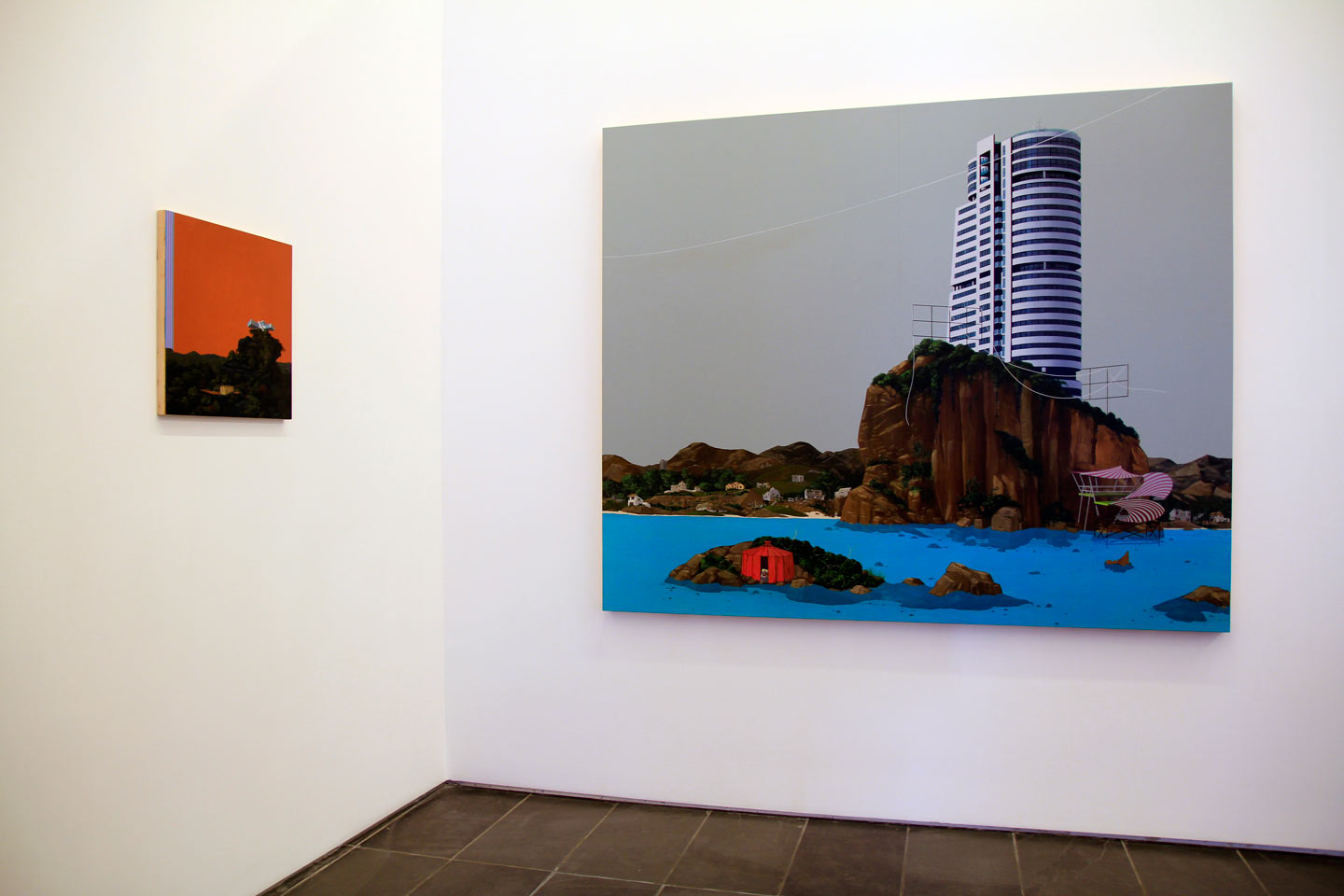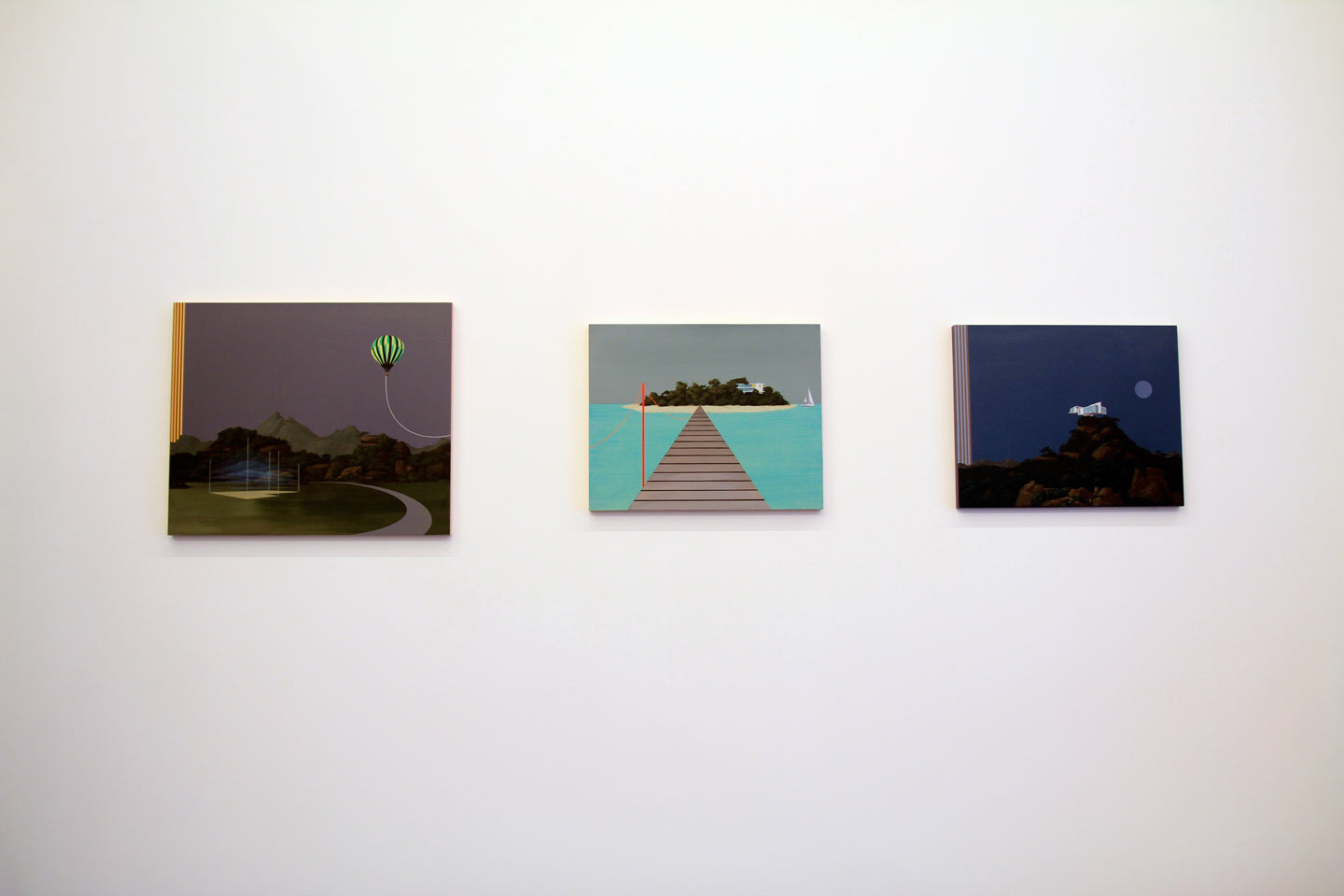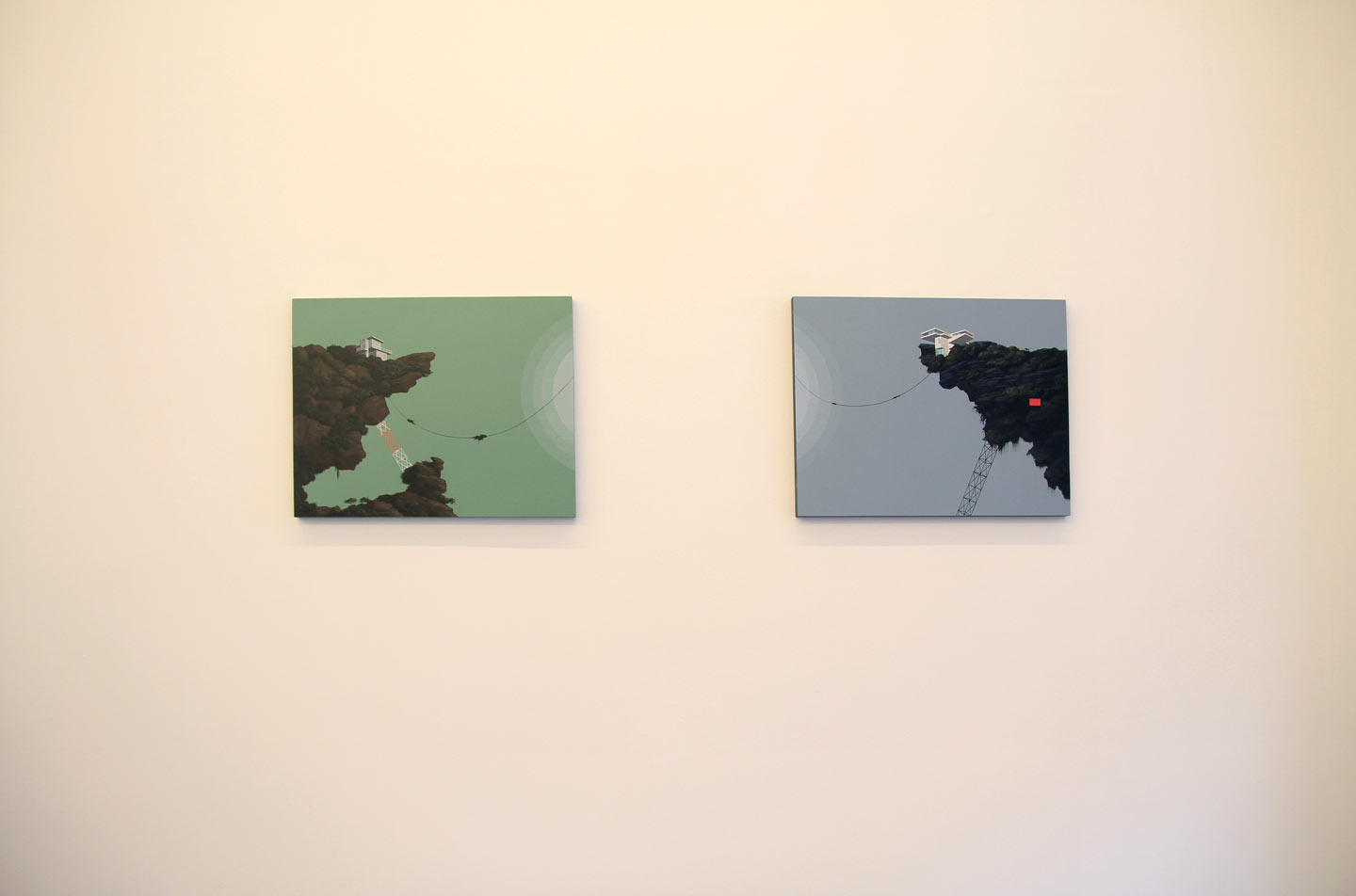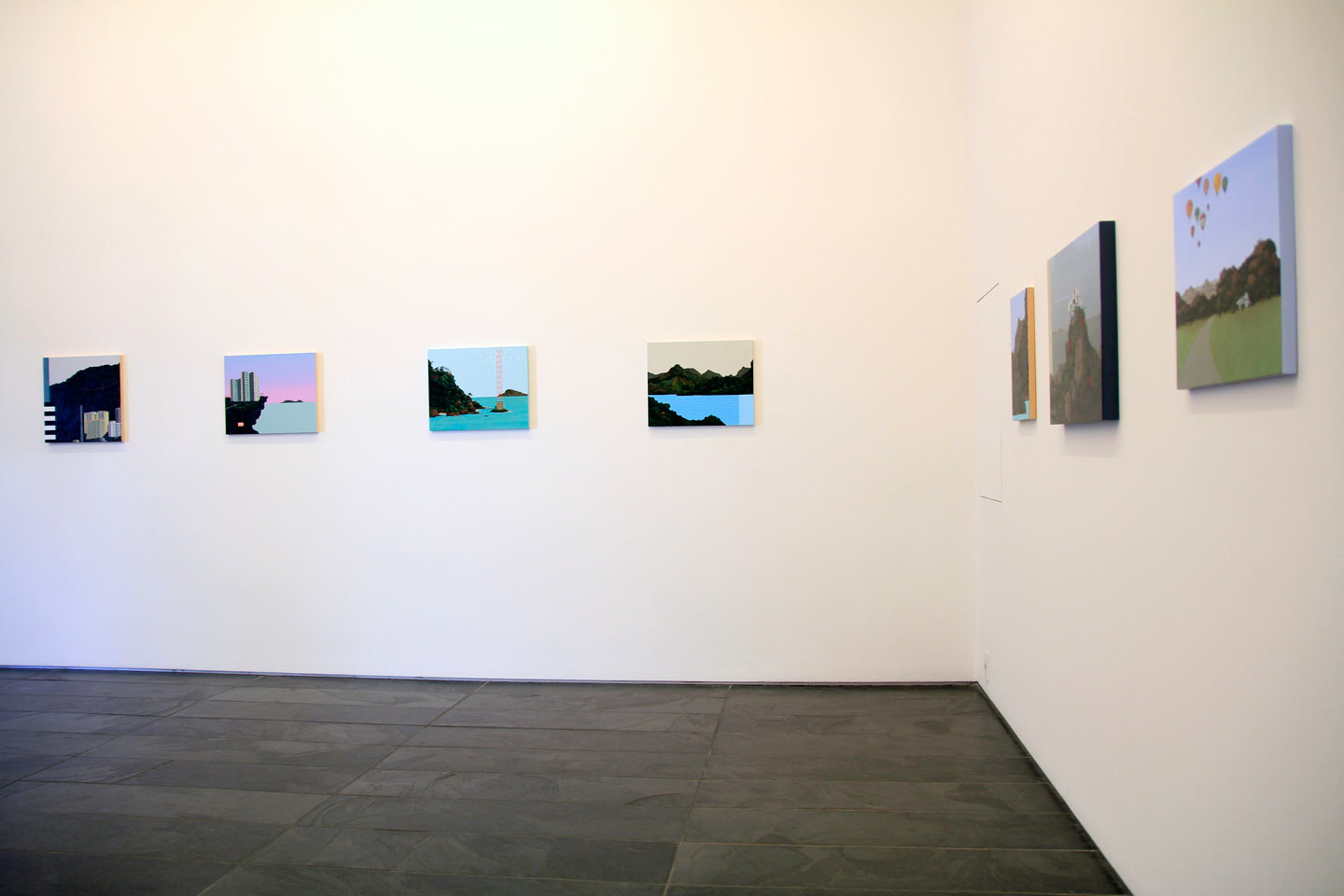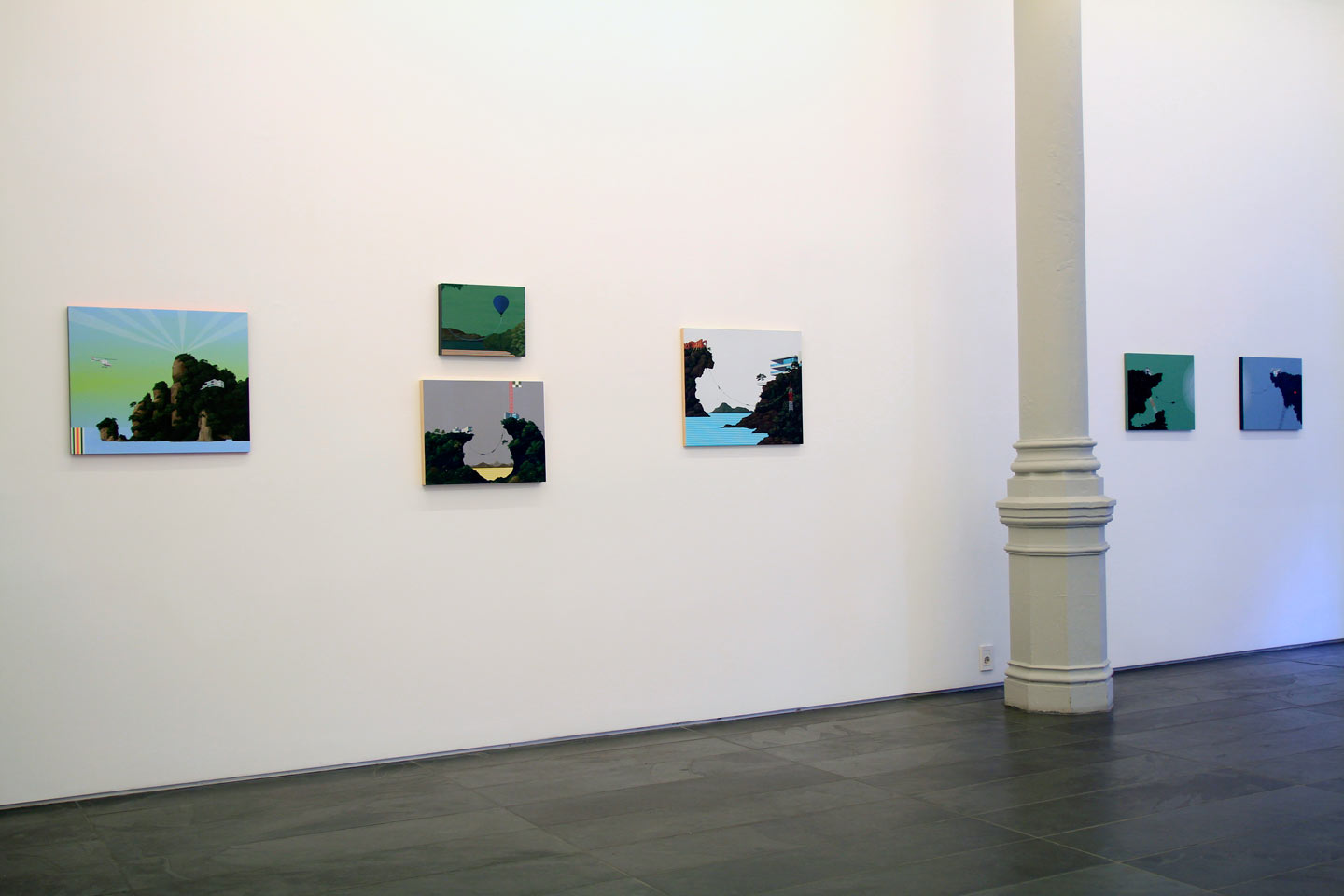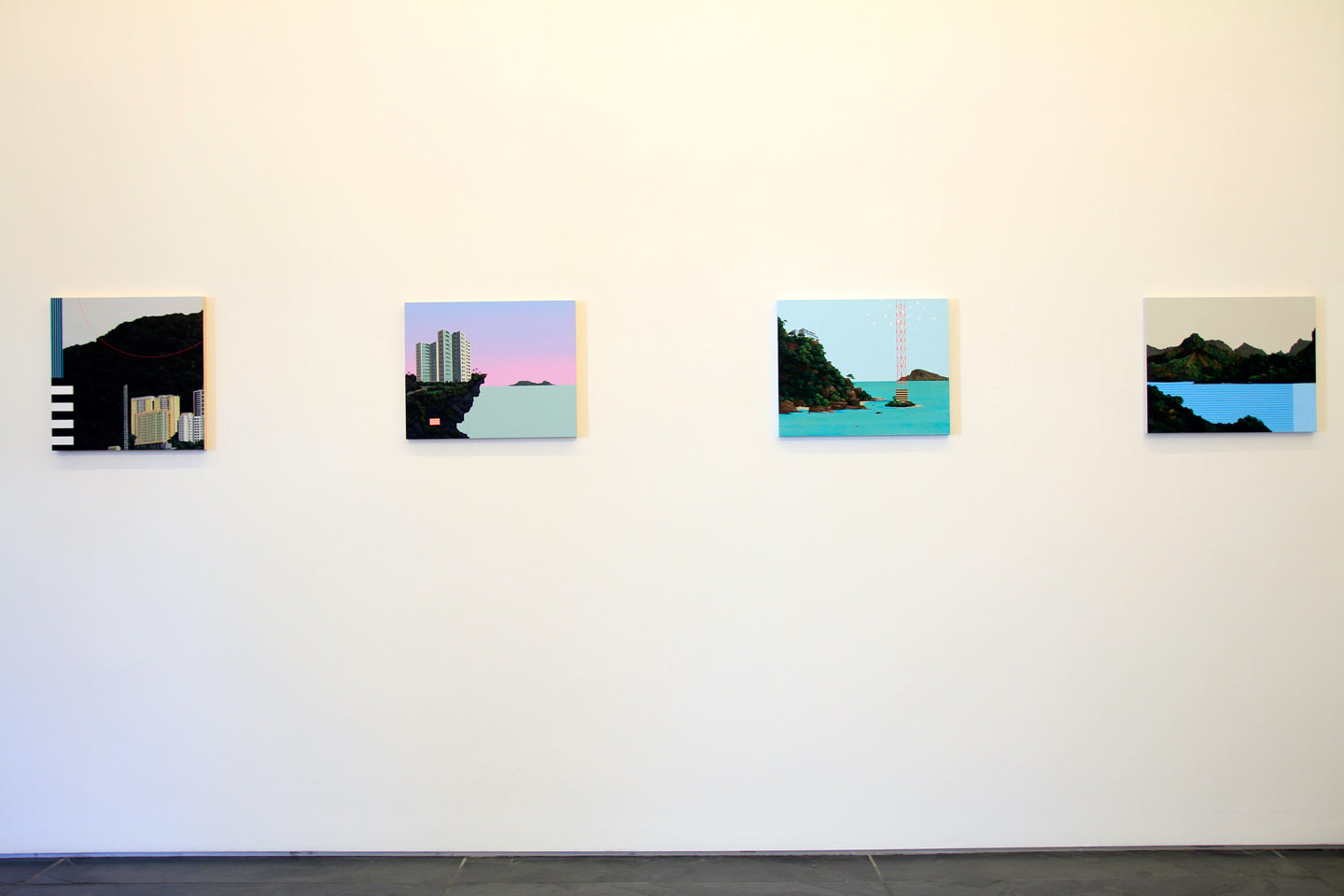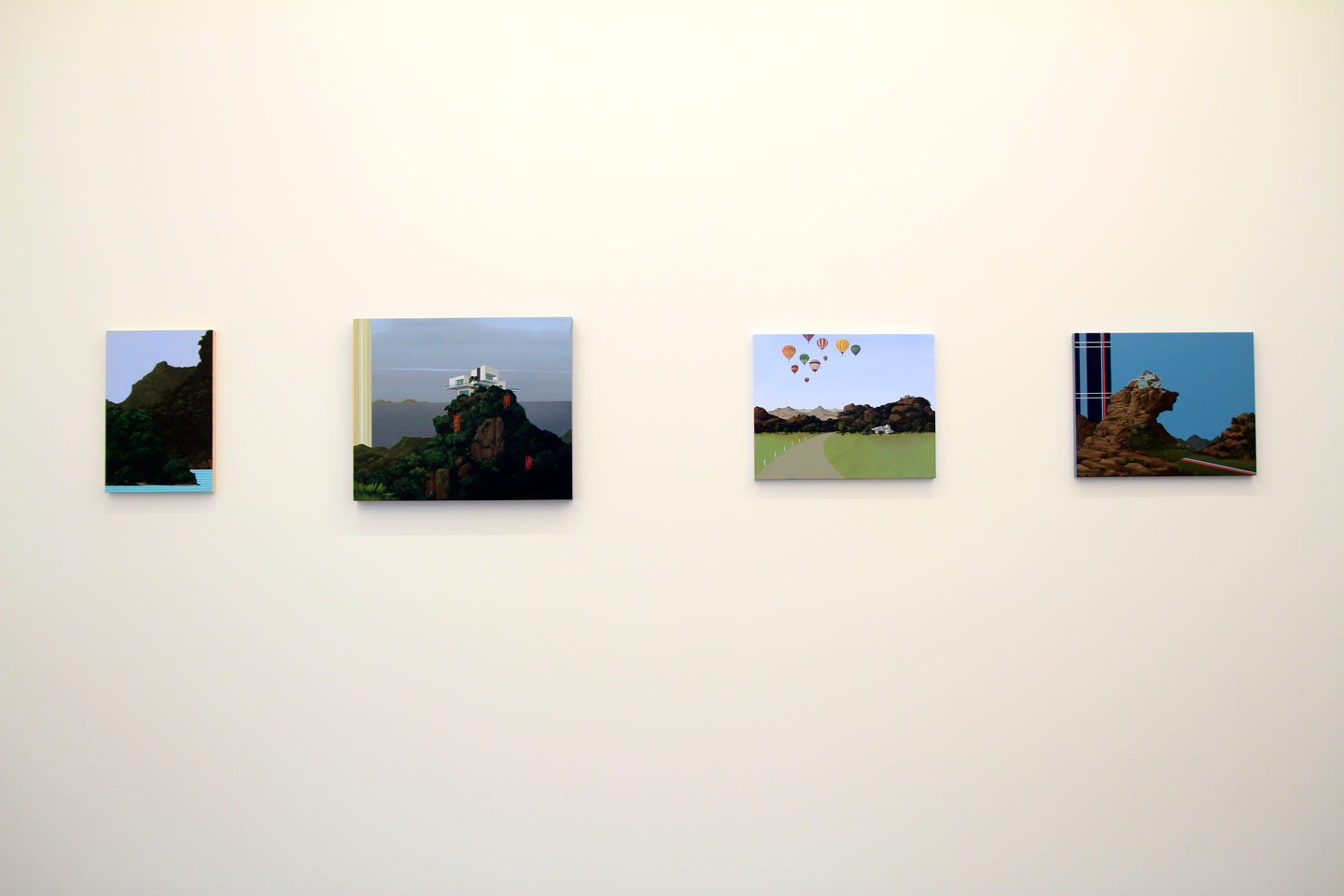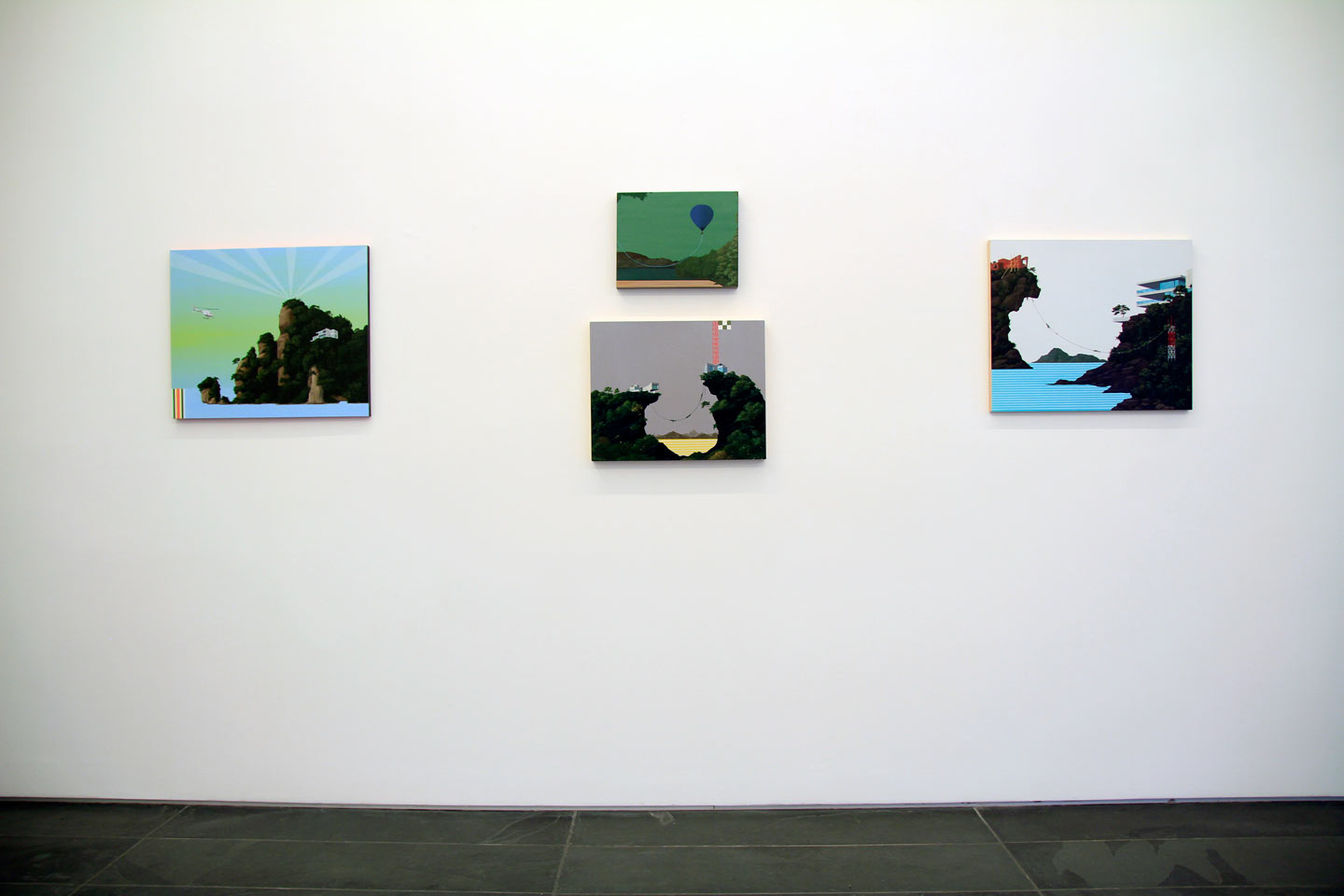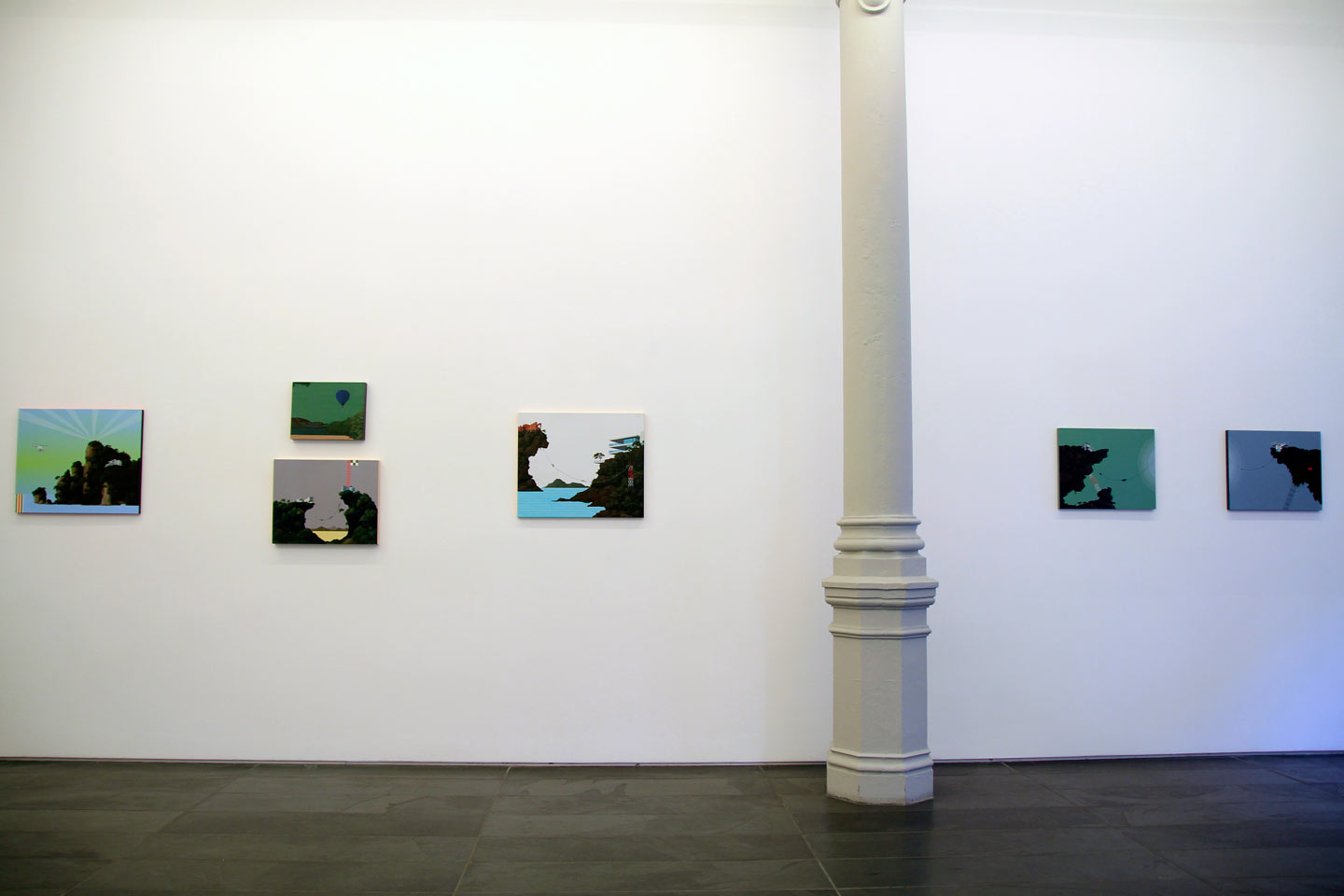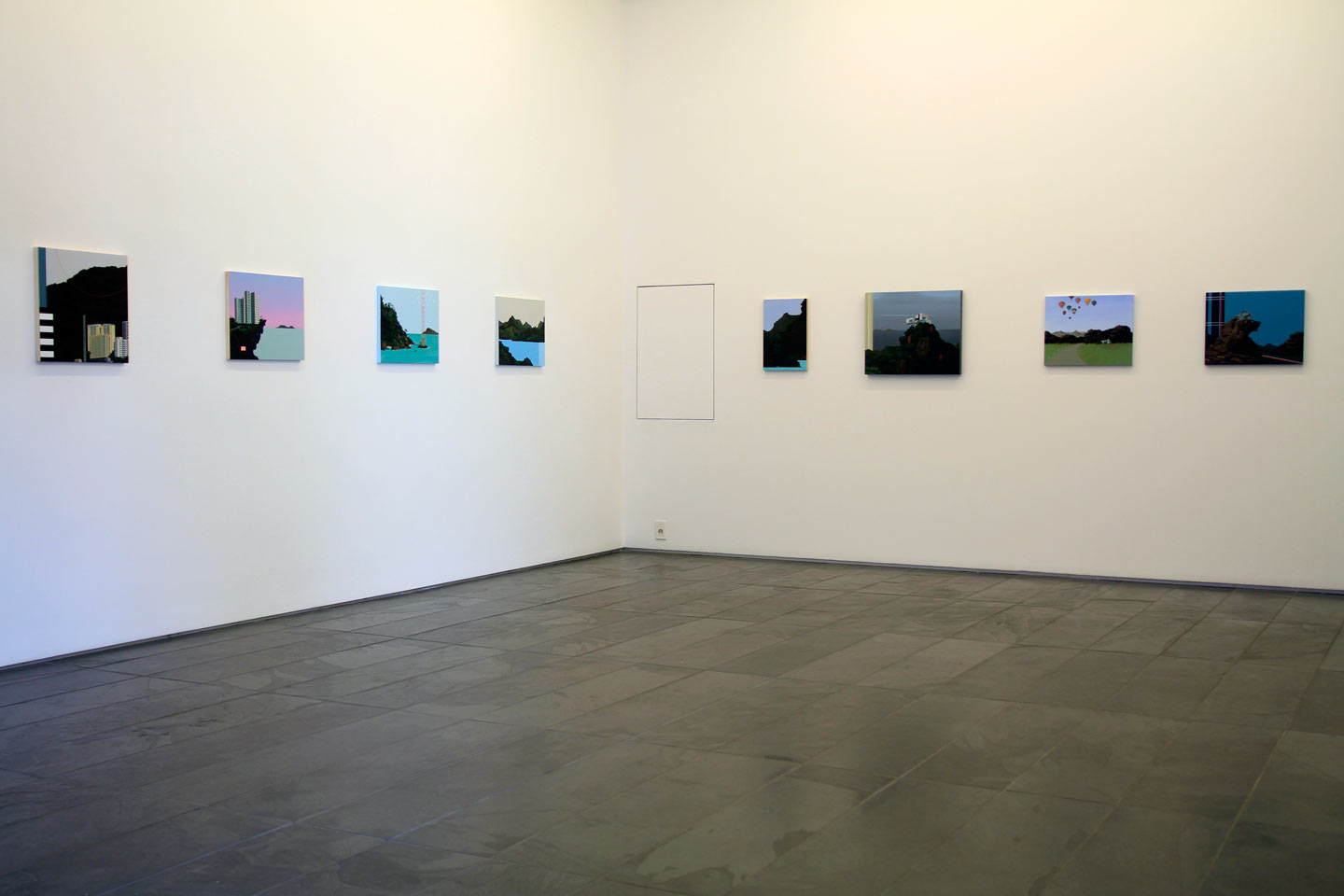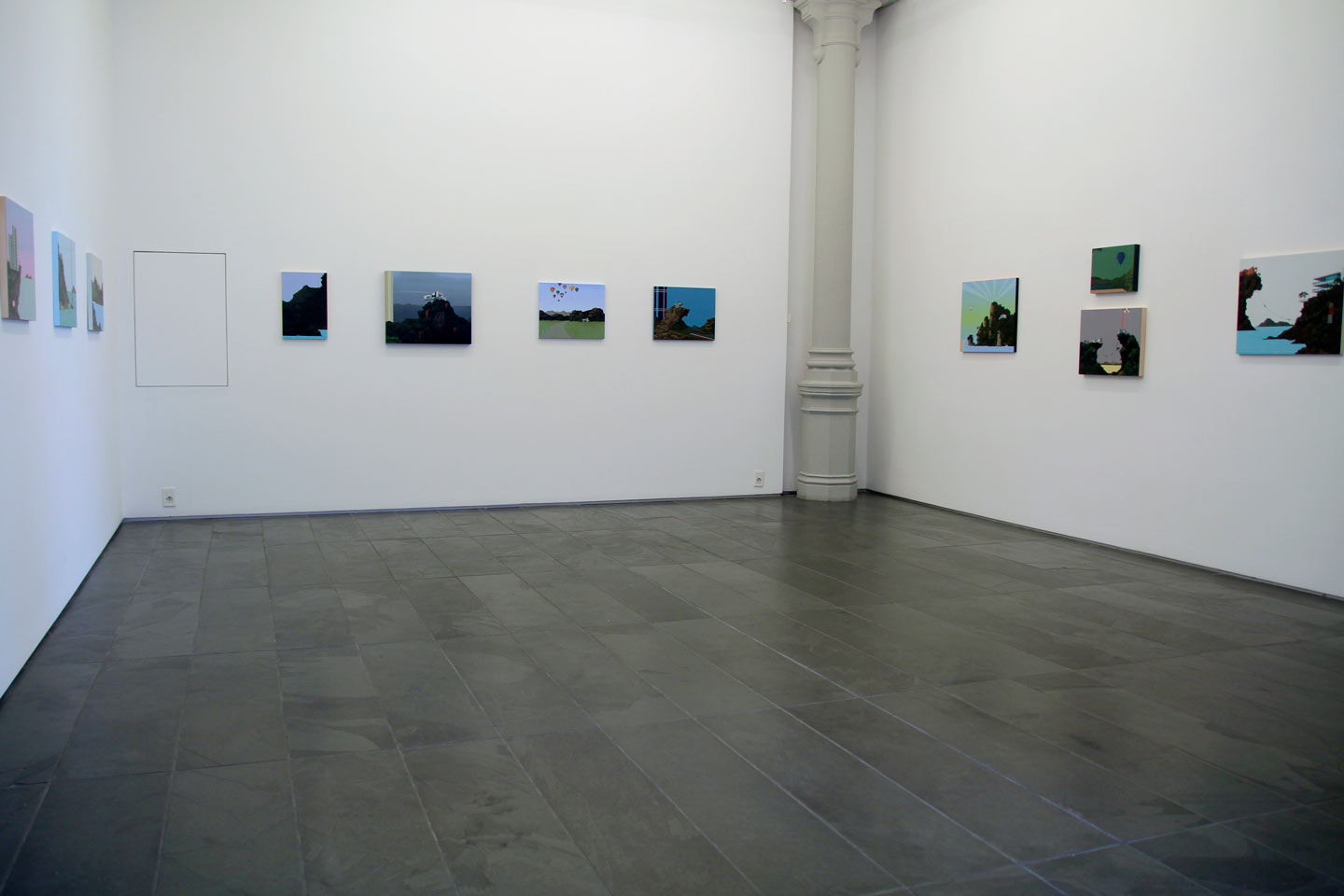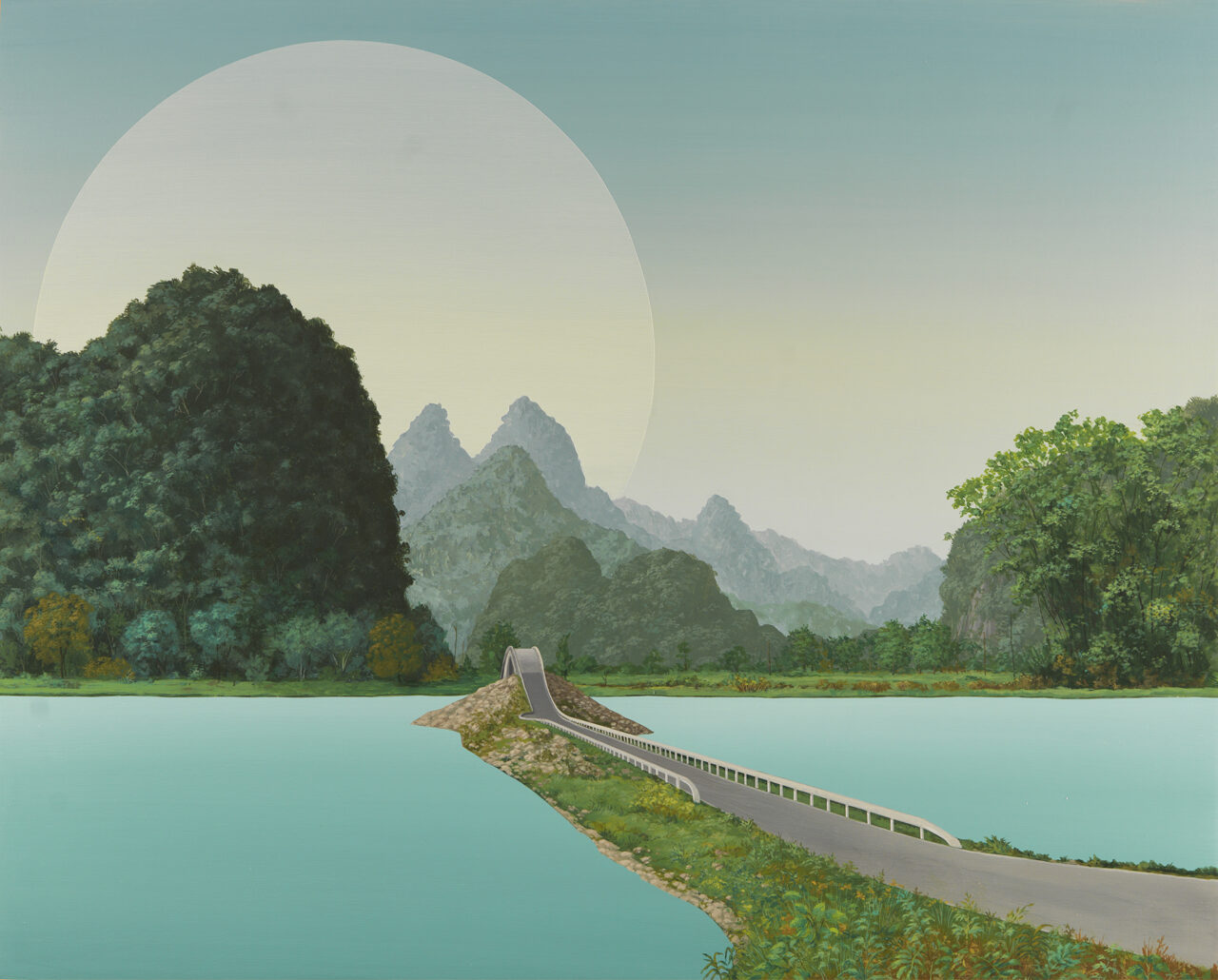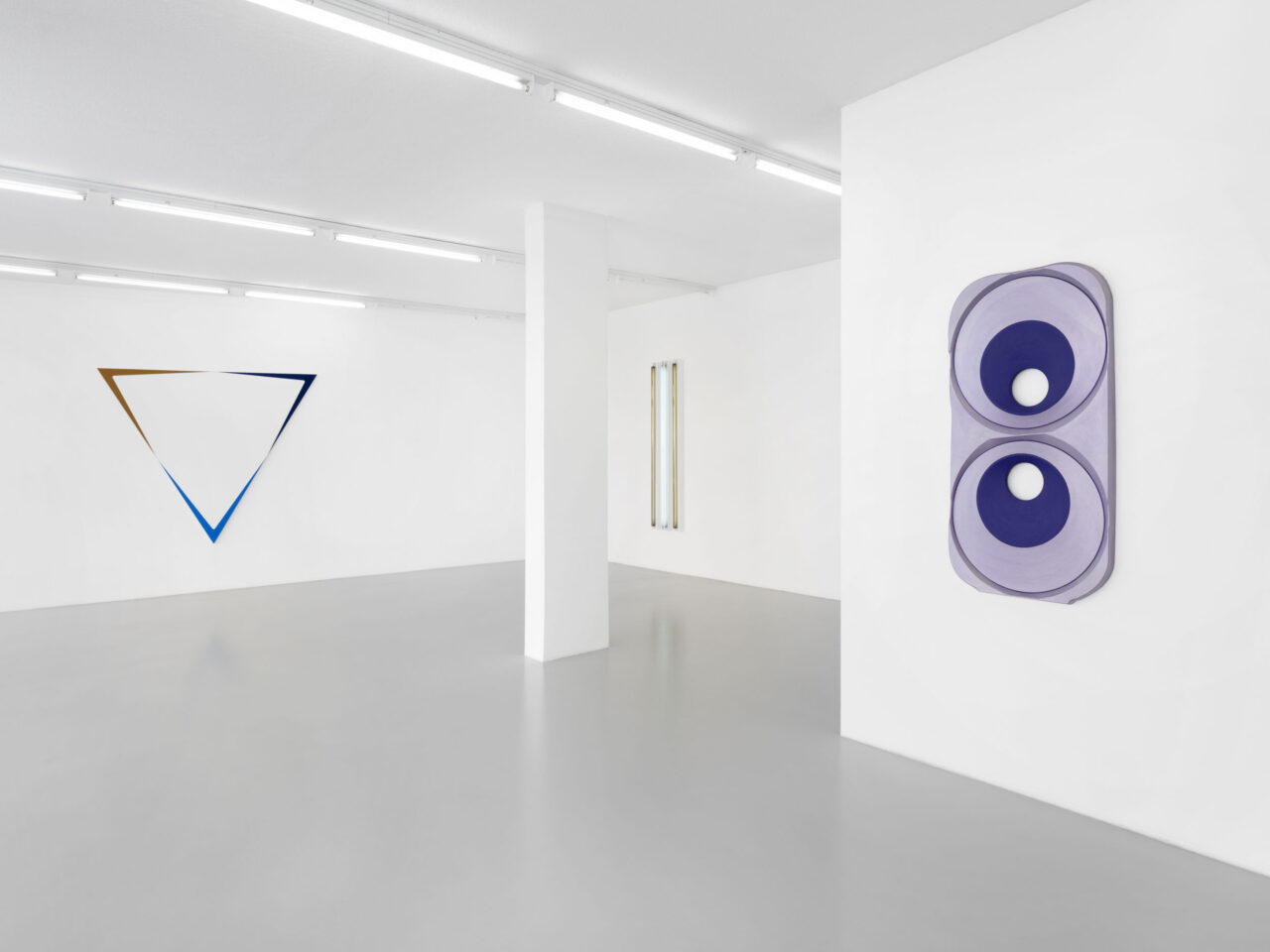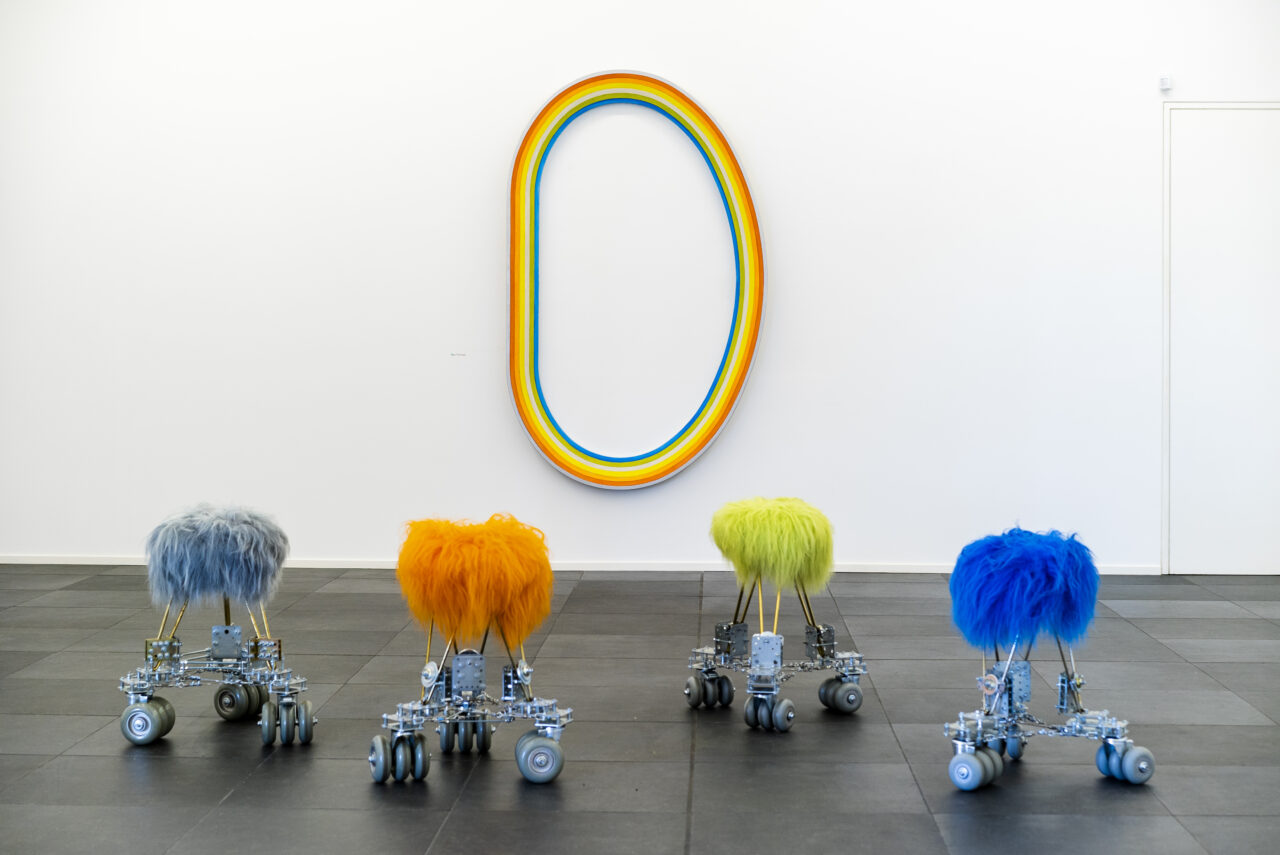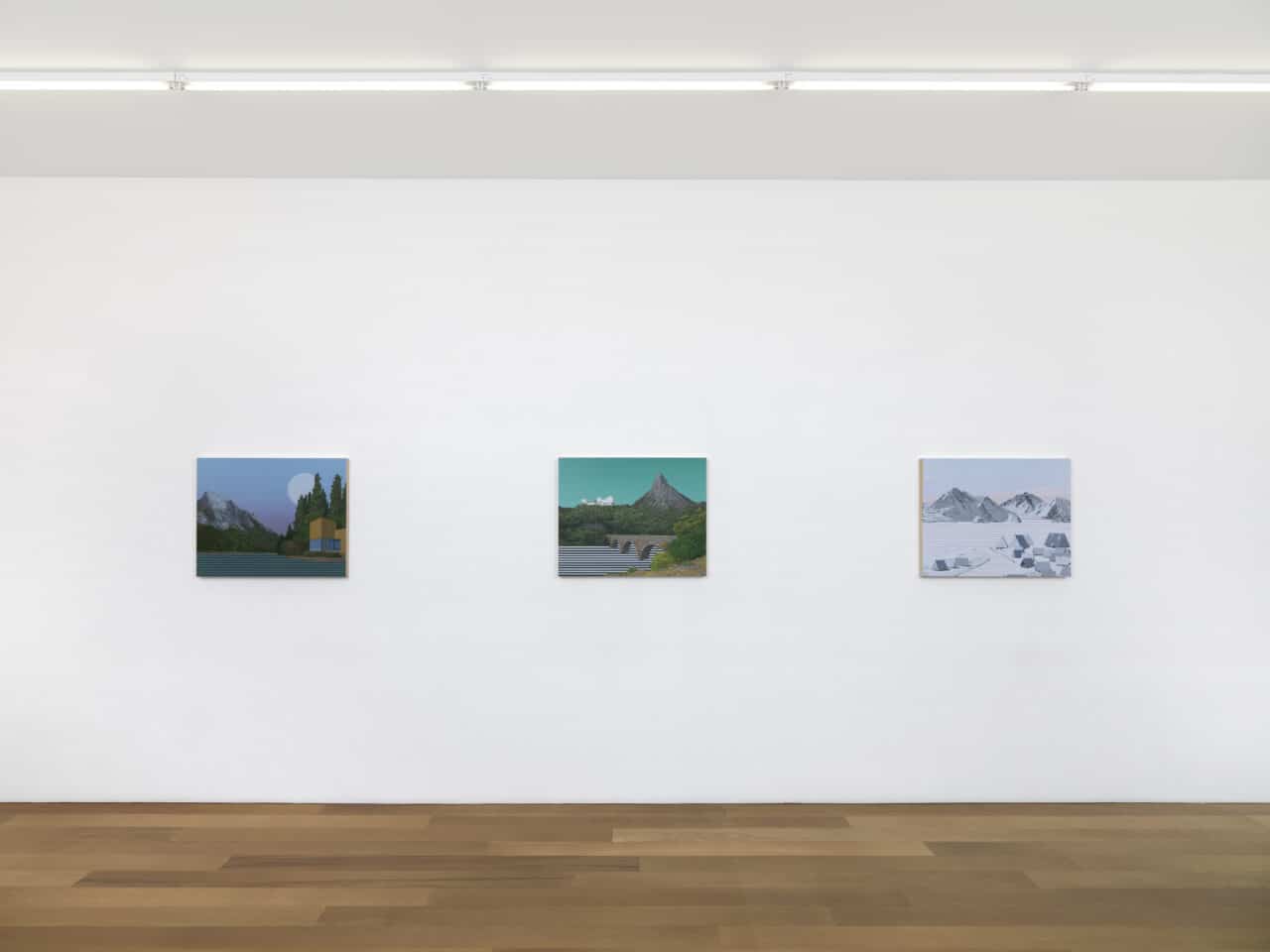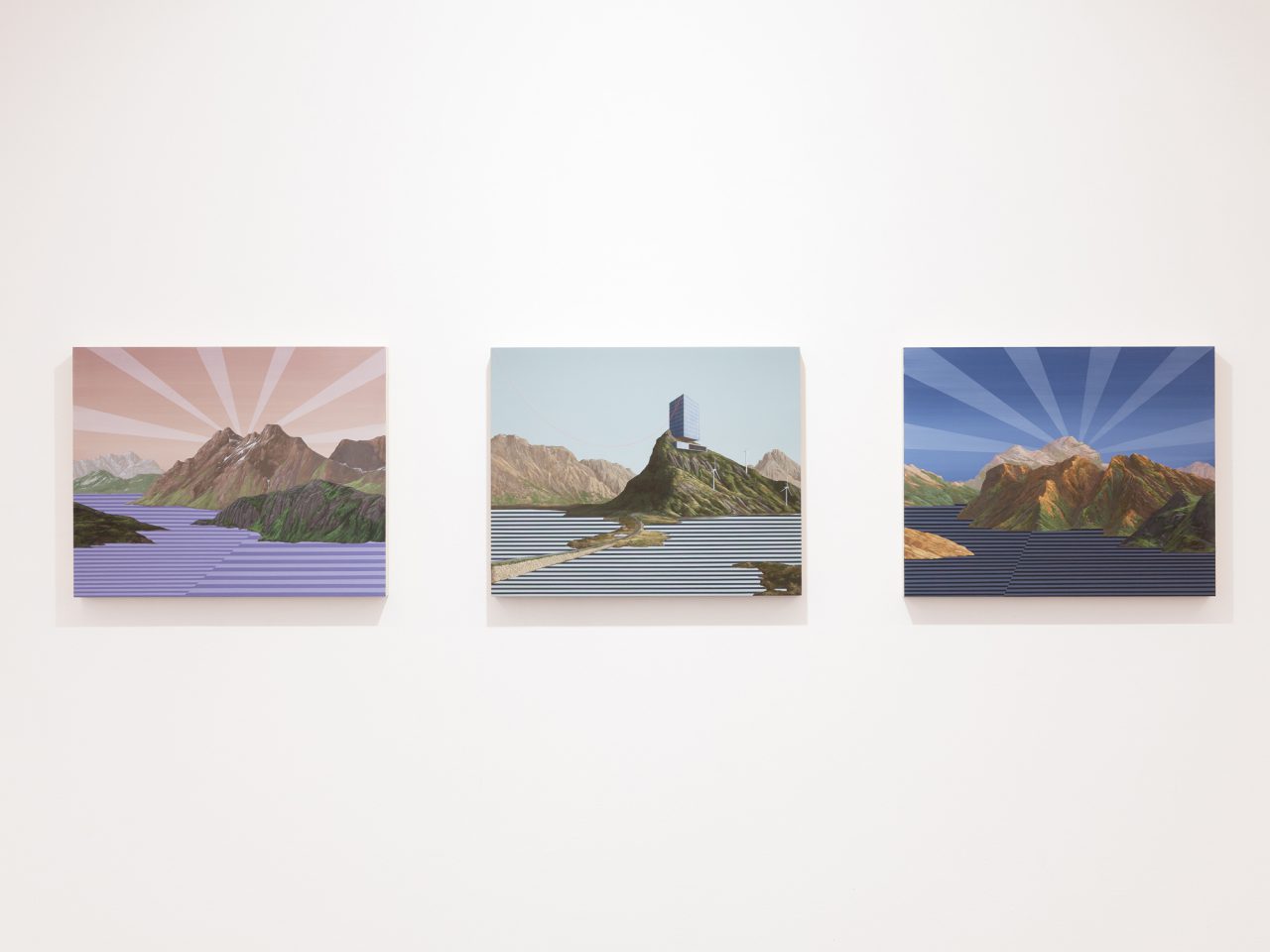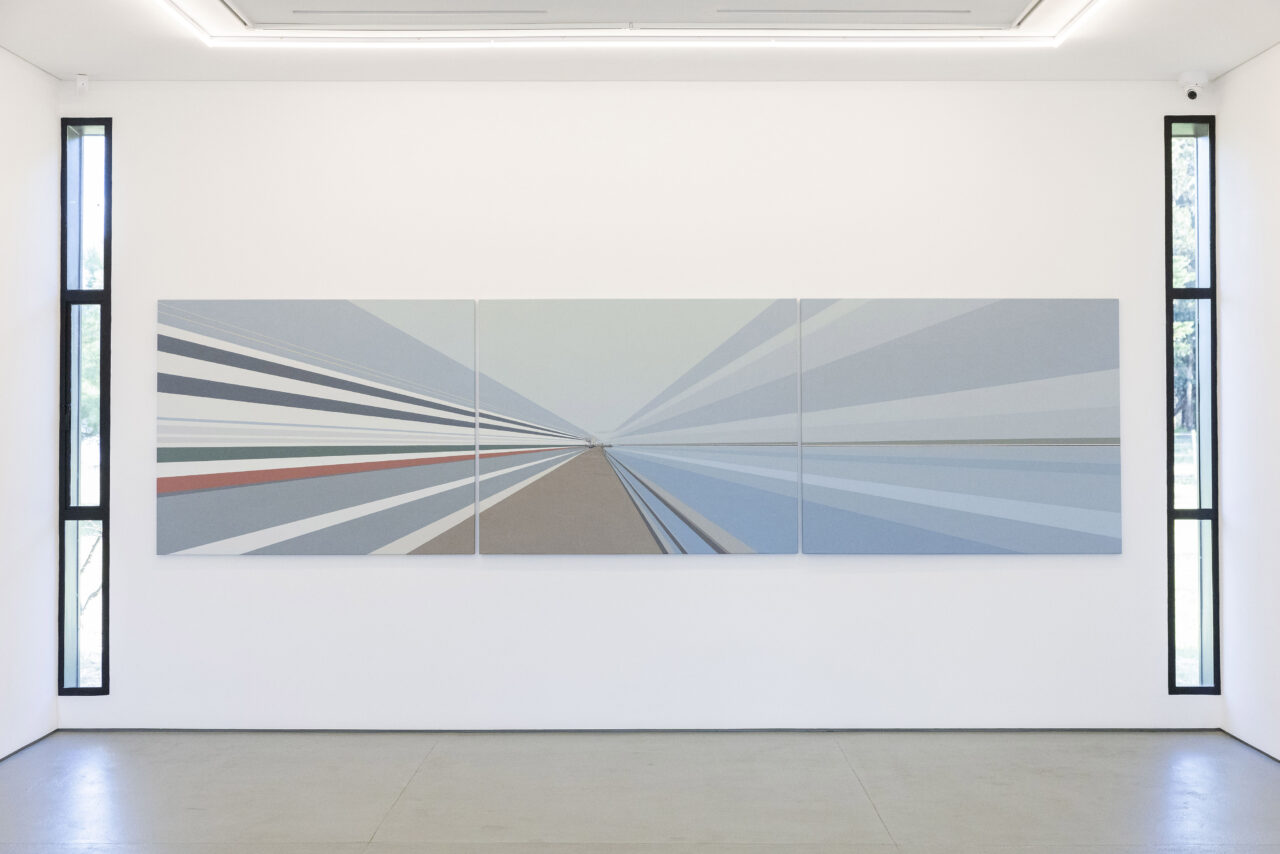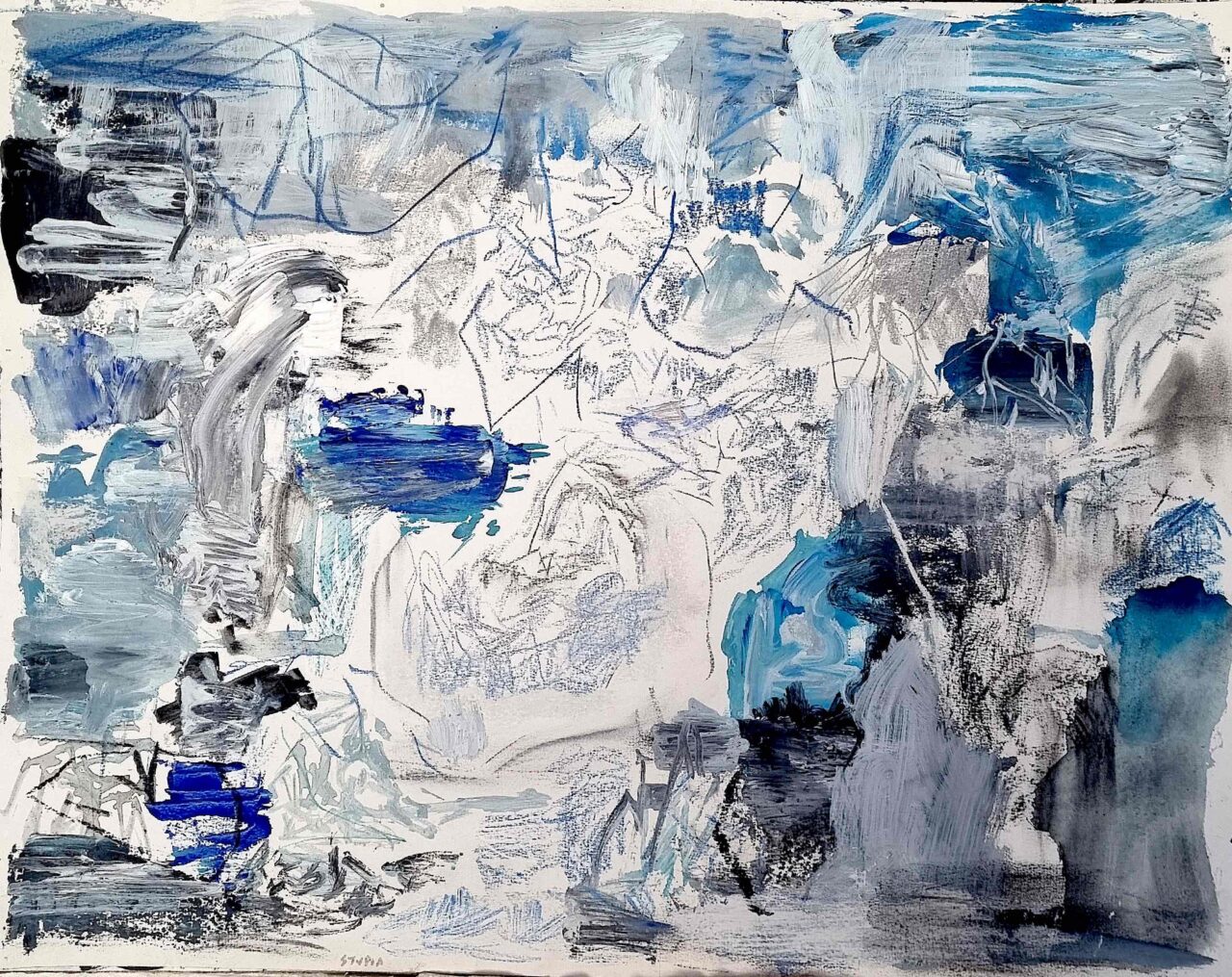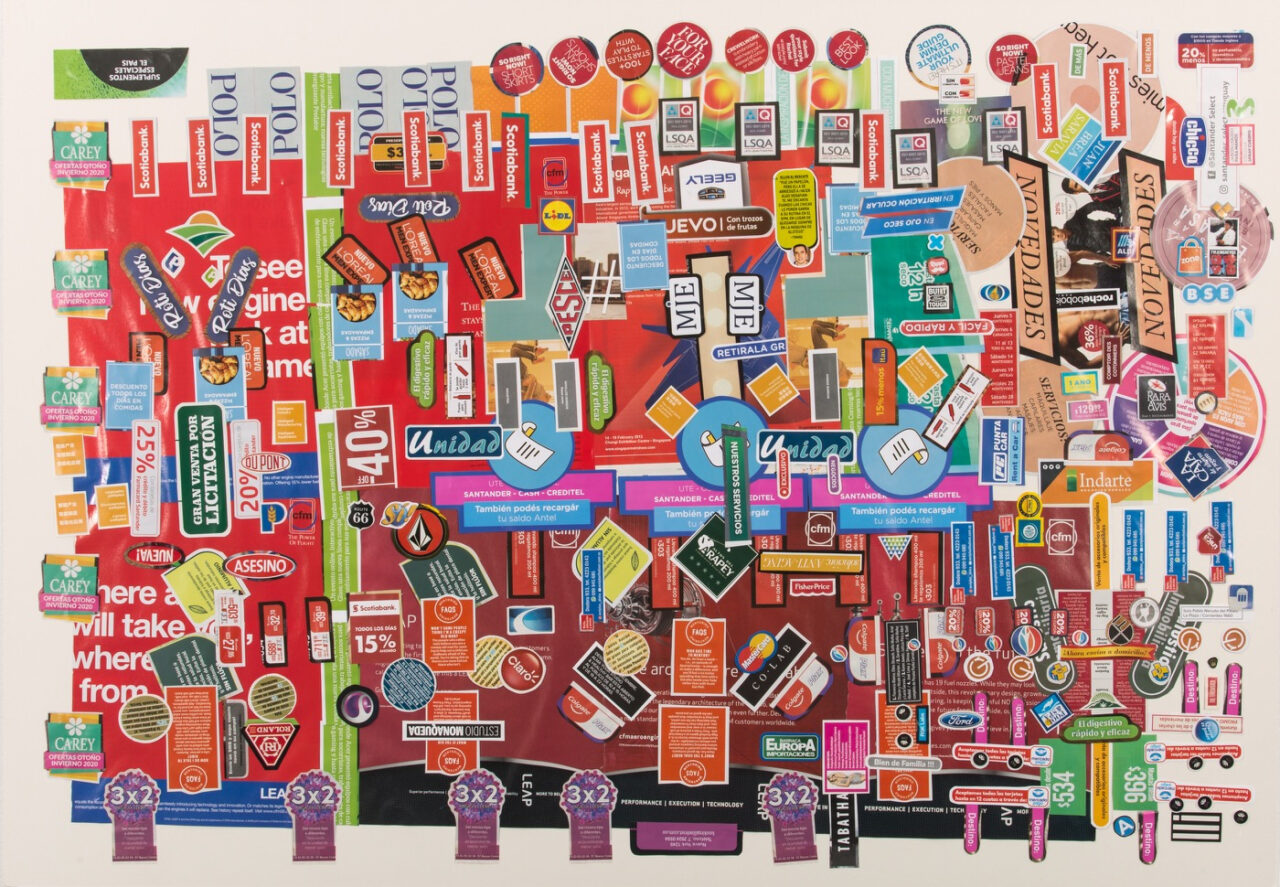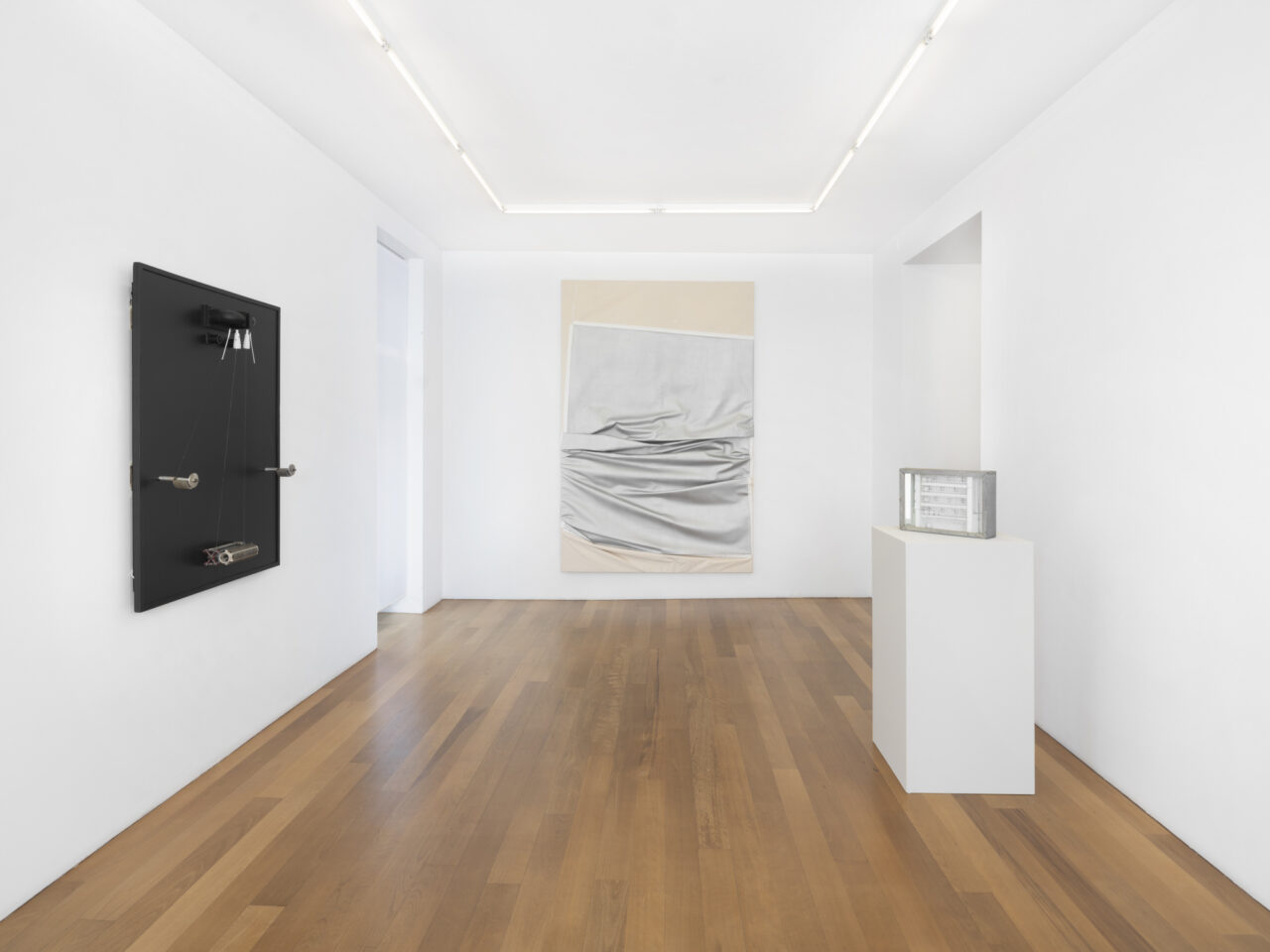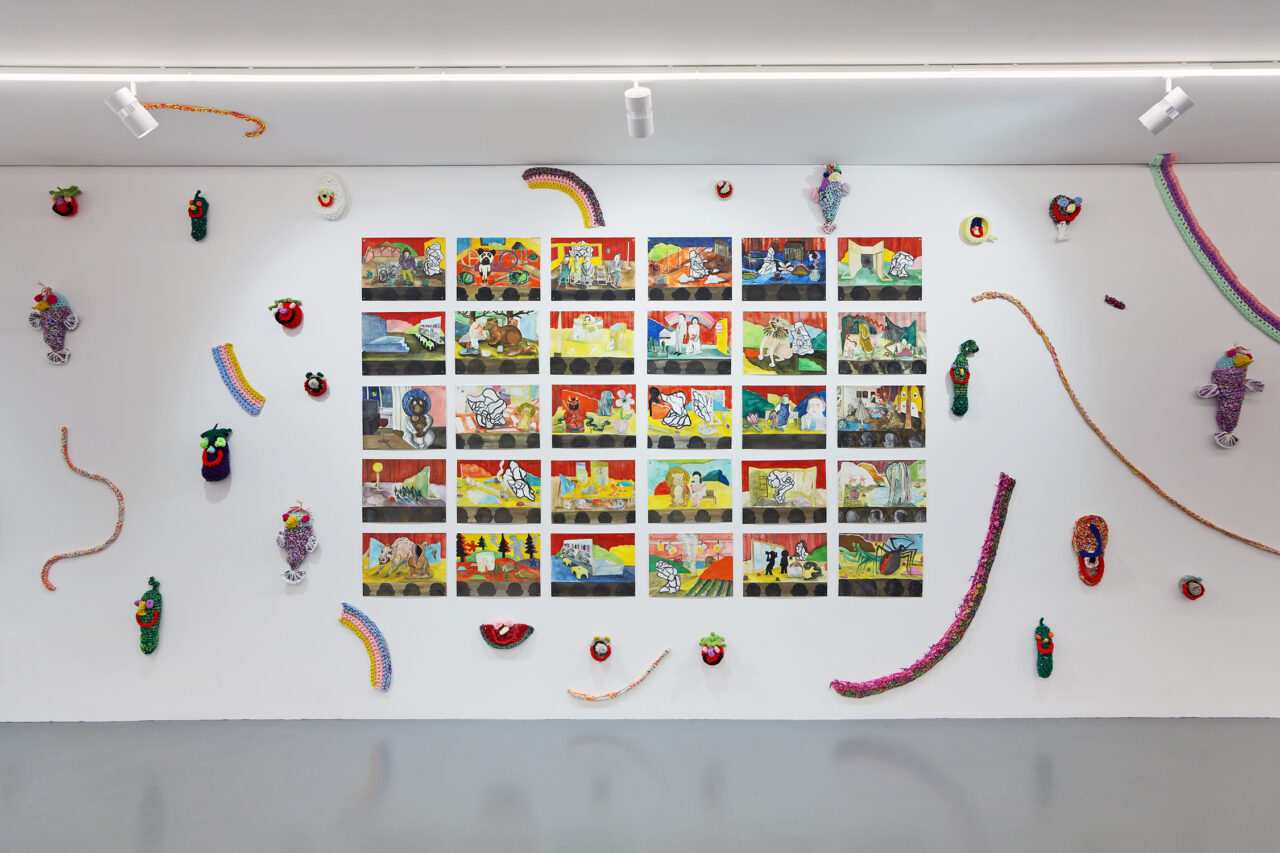Dean Monogenis – Place in Mind
Dean Monogenis
Place in Mind
19.12.13 → 12.04.14
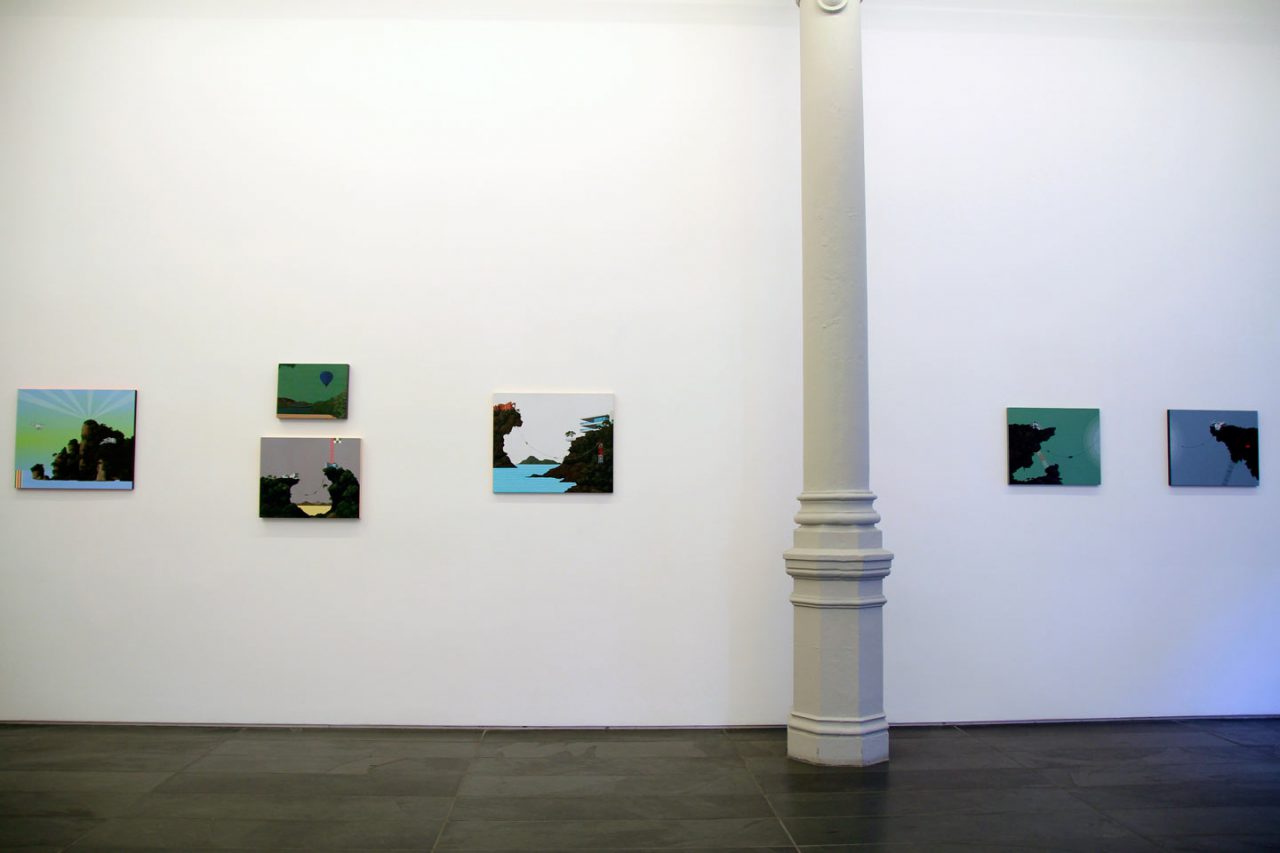
Monogenis’s paintings reveal architectures, most often modernist but sometimes contemporary, in natural environments free of human beings. The buildings, either in construction or in ruins, stand isolated in landscapes that are difficult to identify.
Monogenis reconstructs archaeologies of the present, remnants of recent civilizations, and a universe in perpetual evolution: here he highlights a particular transitional moment that can be seen as the struggle between massive urbanism and a resistant mother nature. Above all else, the painter wishes to show structural elements, skeletons, and materials such as heaters and pylons.
Monogenis is inspired by his own collection of images that he accumulated during his travels or found on the Internet. The architectural reality that Monogenis methodically reproduces with precision is constantly disturbed by his choice of fantastical colors and his incorporation of graphic abstract elements. This expert combination operates somewhere between finger paining and stenciled appliqué on a canvas of wooden or plastic panels. Meanwhile, the presence of lines or checkerboards, the play of unnatural colors, and the superposition of surfaces cancel out any preconceived notions of backdrop and foreground and plunge us into a state of doubt and muted confusion not unlike reality.
By observing recent utopias and selecting their symbols, Monogenis reveals the difference between what we can conceive of and what we see, i.e. what we can dream. When faced with the ideology of progress associated with modernist thought resolutely turned towards the future, Monogenis marks the precise moment of transition and mutation, when it can be complicated to determine the first element of change. He relies on the principle of uncertainty. The strength of Dean Monogenis’s work resides in his ability to combine the observer’s vision of the world with the metamorphoses in his paintings.
Besides their practical usage, I had never regarded buildings or architecture as more than symbols or monuments to someone else’s memory or beliefs. This changed after witnessing the fall of the world trade center. Subsequent to that day, I began to see buildings organically in terms of birth and death. Interestingly the post 9/11 period was the beginning of a world wide building boom. At the time I lived in Williamsburg, Brooklyn, where the breadth and pace of this development felt like an invasion. Buildings grew nearly over night like mushrooms or mold before my very eyes. I found it simultaneously engaging and frightening. The instinctual necessity to develop every last inch of real estate was palpable. Buildings that sprouted up would often supplant or sit next to an older building with little regard for continuity or urban planning. There was a strong sense that these decisions were made out of expedience and practical necessity with little oversight. After overcoming my initial shock, I began to distance myself and consider the situation aesthetically. I interpreted the randomness as more akin to the shantytowns in Jamaica or the Favelas in Rio. I took notice of the simplicity and planer forms of the skeletal structures as they ascended upward. Brightly colored building materials like netting and scaffolding, became interesting to me. I thought if there was a way to distill the temporary and all its ephemera, isolating key pieces into my work, then I would be able to elevate the visual indicators that speak to this period of transformation.
The concept of transformation — in theory and practice — has a firm place in my painting. Though my work looks highly rendered, I employ an active process of editing. Normally, I paint on wood or plastic panels employing customized stencils. Utilizing the dialogue established between different painting techniques, these stencil-applied graphic elements are integrated with areas that I paint freehand. Line, edge, and texture are very important to me as well. To accentuate these formal concerns I often paint things like the sky last, which creates a shallow, imbedded quality to the painted imagery underneath. The effect works to maximize the visual tension on the painted surface, challenging the logic of what naturally should be in front and behind. As the picture develops there inevitably comes a point for revision, that I achieve by sanding and reworking areas to bring them back to a zero state. This ability to erase allows me to maintain precision without forfeiting spontaneity and improvisation.
Dean Monogenis.
Dean Monogenis was born in New York in 1973. He attended Skidmore College and graduated from the Art Institute of Chicago. Since then, he has lived and worked in Brooklyn, New York.
Dean Monogenis has shown at Riva Gallery, Annina Nosei Gallery, Stux Gallery, Morgan Lehman Gallery, Elga Wimmer Gallery, Priska C.Juschka Fine Art in New York City, Walter Maciel Gallery in Los Angeles, and also Antoni Battaglia Arte Contemporanea in Milan.
This year, Dean Monogenis was awarded the Artist in the Market Place (AIM) Program from the Bronx Museum of the Arts (Bronx, NY, USA).
His work was shown in numerous group shows: “Incognito” at Santa Monica Museum of Art (Santa Monica), “Recent Acquisitions” at the Federal Reserve Board, (Washington), “Reconstruction Nature” at Hunterdon Art Museum (Clinton, New Jersey), “Future Tense” at the Neuberger Museum (New York), “Lost Horizon” at the Herter Gallery (University of Massachusetts, Amherts), and “Beautiful Dreamer” at Spaces Gallery (Cleveland, Ohio).
This is the 3rd solo show of Dean Monogenis at Xippas gallery in 2013; first was in Geneva, afterwards in Paris, and now in Montevideo.
Exhibition views
-
![Dean Monogenis, Place in mind]()
© María Inés Arrillaga
-
![Dean Monogenis, Place in mind]()
© María Inés Arrillaga
-
![Dean Monogenis, Place in mind]()
© María Inés Arrillaga
-
![Dean Monogenis, Place in mind]()
© María Inés Arrillaga
-
![Dean Monogenis, Place in mind]()
©María Inés Arrillaga
-
![Dean Monogenis, Place in mind]()
© María Inés Arrillaga
